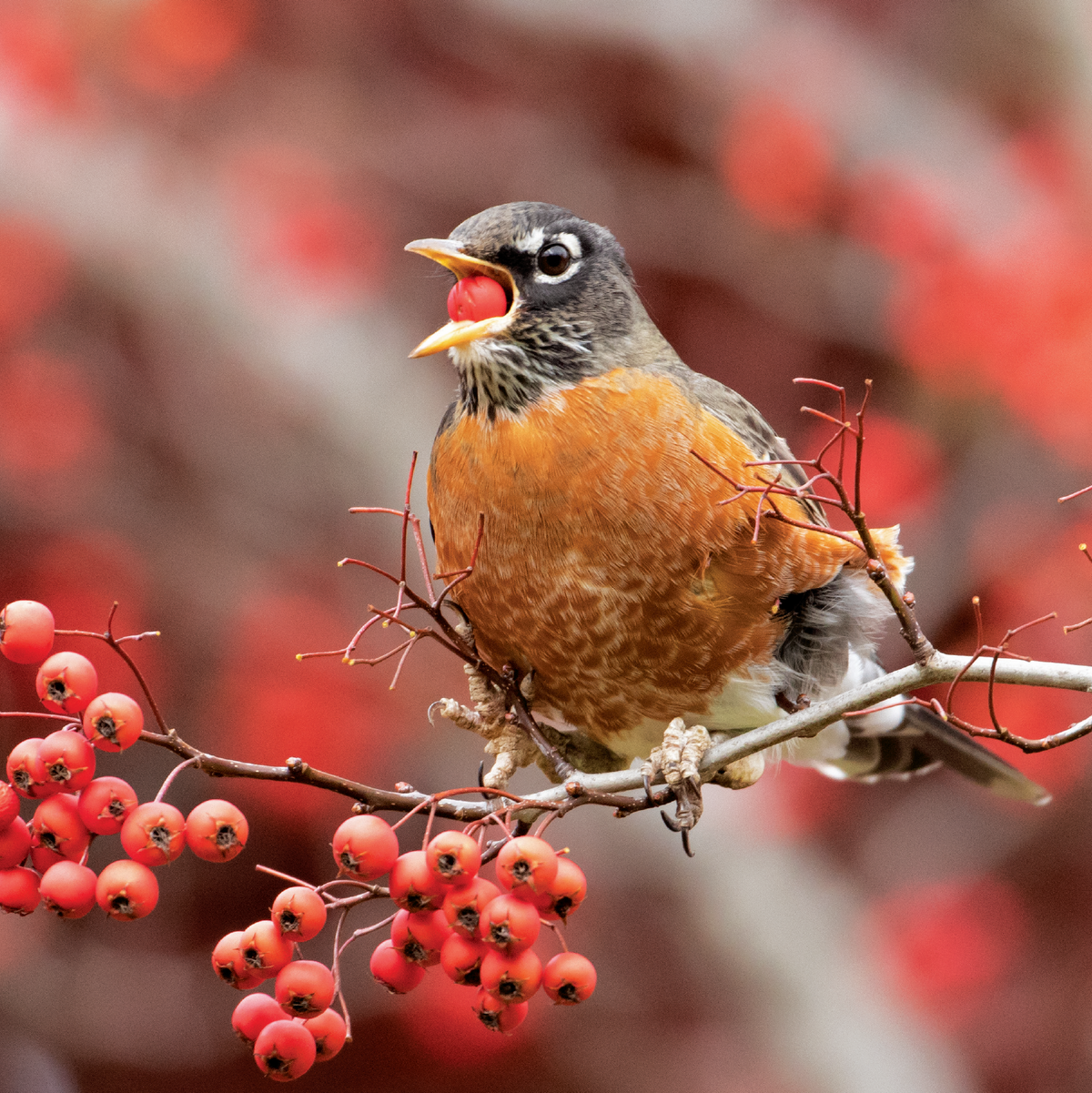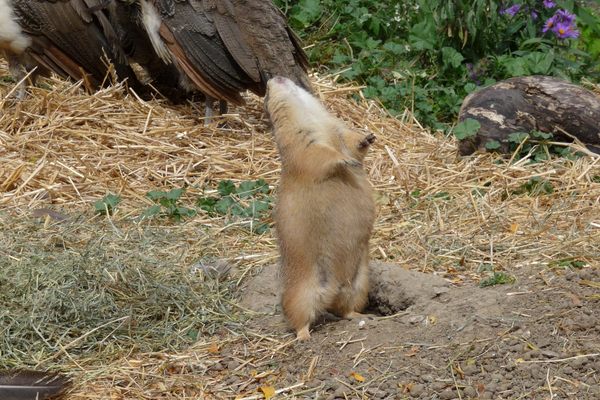Find More Birds Wherever You Are With These Birding Basics
Author and birding enthusiast Heather Wolf shares her favorite tips for finding our feathered friends.
Adapted and excerpted with permission from Find More Birds: 111 Surprising Ways to Spot Birds Wherever You Are, by Heather Wolf, published August 2023 by The Experiment. All rights reserved.
Whether you’re strolling down a city street, deep in an old-growth forest, or standing on a barren, rocky Antarctic beach, chances are you’re not alone. You just might not notice the flycatcher, woodpecker, or skua that has likely noticed you. Birds are among the most diverse and widely distributed animals—and learning how to find and appreciate them doesn’t require anything more than your powers of observation.
Author and avid birder Heather Wolf, a web developer at the Cornell Lab of Ornithology, shares some of her favorite tips to get started.
Follow Sounds
Sound is the single most important clue to finding more birds. While entire books have been written on the topic of how to identify birds by ear, it doesn’t matter if you know what species of bird is singing, calling, crying, chattering, whistling, or screaming—you can still find it by following its sound. During a class I teach at the Brooklyn Botanic Garden, we were practicing the topic of the week: detecting and following bird sounds. A raspy and repetitive chatter in the distance led us to a feather snowstorm emanating from a large oak. As the plumes landed in our hair, a wildlife documentary unfolded right in front of us—a red-tailed hawk was perched above, clutching its pigeon prey. As if that wasn’t exciting enough, half a dozen common grackles were mobbing the hawk, jumping on it while making the noises that had led us straight to the show. To find more birds—and more bird drama—always follow sounds.

The more you do this, the more you’ll start to notice yourself organically learning and recognizing the sounds of bird species. Kick-start this process by listening closely to the qualities of the sounds you hear—rhythm, tempo, timbre, pitch—and approach it as a form of music appreciation. Before you know it, you’ll be able to pick out the cheerful tune of a song sparrow or the piercing call of a blue jay. Actively listening to birds will also improve your skills in detecting distant birds and in associating certain sounds with bird behaviors. (Birds often make “alarm calls” to warn others of a nearby predator and, as with the previously mentioned grackles, “mobbing calls” to recruit help during an attack on a predator.)
Look for Movement
A close second to following sounds, looking for movement is an essential tip for finding more birds. Granted, this can be difficult on a windy day or when leaves are falling in autumn, but tuning this skill on tranquil-weather days will turn you into a bird-finding pro. Try this exercise: Pick a place to sit or stand for 15 minutes. Scan the landscape and notice what is moving—it could be planes, dragonflies, a squirrel, or a possum, but hopefully also birds. All the things you notice moving will help you develop better detection of movement. Using a soft gaze helps; try not to focus on any one thing as you scan the area and you’ll pick up on slight movements more easily. When you notice a bird, change to hard focus and lock on the thing as if you were a pro tennis player about to return a 150 mph (241 km/h) serve. Watch the bird in motion—whether it’s flying, running, hopping, or wading—and observe it and enjoy. If you have binoculars, keep your eyes on the bird while you raise them to your eyes. (Maintaining a view of the bird and/or source of movement from naked eyes to binoculars is not easy, but it’s worth taking the time to develop this skill.)
Use the same soft-gaze scanning technique on a single tree, a tiny shrub, or a patch of leaf litter. During migration, this is a great way to find warblers, which are tiny and difficult to see; stay a while and look for subtle movement as these birds hop and flit through the habitat, foraging for insects and other arthropods. Soon, you’ll be able to detect birds in their favorite hiding places; you’ll notice how the gentle tug of a tree branch that snaps quickly back into position often signals a bird, while a stronger, longer pull or drag of a branch is usually a squirrel.

Check Freshwater Sources
Drip, drip, drip. The leaky spigot in the campground may seem wasteful, but the local crows are certainly putting it to good use. It’s their drinking fountain. I discovered this when we unknowingly pitched our tent near the spigot and were awakened each morning by caw-caw caw-ing as a trio of crows flew in to fight over the drips. (It’s just as well they woke us up early, as we had a lot of birds to find.)
Most birds need water for drinking and bathing, so knowing the local watering holes is a great way to find them. Shallow, gently sloped edges of ponds are ideal places to look, especially those surrounded by trees or other perches where birds can preen after a bath. Water that moves or drips also catches birds’ attention, so be on the lookout for streams or active fountains. Surfaces of ponds and lakes are frequented by swallows skimming a drink in flight; swifts and many nightjars hydrate the same way.
Some of the best places to find birds enjoying water are temporary. Small, shallow puddles that form after a rainfall or sprinkler session are perfect for songbirds. Check for these impromptu bird baths on the ground, on large rocks, or on anything else where 1-2 inches (2.5–5 cm) of water might collect. I once found a group of 12 young cedar waxwings bathing on a lawn, splashing around in mini pools of water that had formed between clumps of grass.
When their regular water sources freeze, birds often seek out leaks, drips, and melting ice. After a heavy Brooklyn snowfall, when every pond and puddle was frozen solid, I spotted American robins lining a wooden bench patiently waiting for ice to melt and drip down the bench backrest; nearby, a gray catbird balanced on a slippery banister to lick off droplets of water.

Stay in One Spot
One cold November day I came upon a dozen hawthorn trees packed with gleaming red berries. Yay! Great habitat! Birds love berries, right? At first, I didn’t see a single bird, but after a few minutes of scanning the rubyscape, my eyes adjusted, and several American robins that were feasting on the fruits came into view. With each passing moment, I spotted more birds until dozens brought the trees to life. As I watched them juggling berries on their tongues, the high-pitched whining of cedar waxwings somehow broke through the noisy chatter of the robins. As I looked closer, I spotted several of them among the densely fruited hawthorn branches.
As you look for birds, you’ll soon realize that the landscape before you may appear devoid of bird life one minute, then come alive with birds the next. It could be that the birds are there and you just need a few minutes for your eyes to adjust and detect movement. Or maybe there really are no birds, but a flock or hawk could fly in any minute. If you come across a promising habitat—a stand of trees or dense shrubs, marsh, mudflats, a tree-lined pond—give it a wait. Ten minutes is perfect, and you don’t have to actively look the entire time. Birds seem to like it when humans appear uninterested, and they often go about their foraging unperturbed from just a few feet away. So do whatever you like while you wait—sit down, read a book, submit an eBird list, check your phone. As you’re hanging out, be aware of any sounds, or of movement catching the corner of your eye, and scan periodically for increased activity.
Scan the Sky
Spotting high flyers, even in the distance, is easier when you’re at their level. You’ll often notice them from a mountain or a bluff, but from down below, they are easy to miss. Get in the habit of scanning the sky periodically, especially in early to mid-afternoon, when hawks and vultures ride hot air thermals that rise up from the earth, allowing them to soar effortlessly without the flap of a wing. Looking up will also increase your chances of spotting large V-shaped flocks of geese, cormorants, pelicans, and ibis, or irregularly shaped flocks of songbirds. Mixed in with a bit of luck, you never know what you might find. One evening while walking in downtown Pensacola, Florida, I noticed a super-wide V formation approaching in the distance; I watched as the rare flock of forty American white pelicans passed over the traffic lights.

Stopping and chatting is also a surprisingly great way to find soaring birds; your peripheral vision will kick in and automatically detect birds in flight. While in Portland, a couple stopped to ask me about the many cedar waxwings flycatching from a nearby snag (a standing dead tree). As we talked and watched the birds’ aerial acrobatics, we were set up perfectly to spot dozens of American white pelicans passing across the sky! The first bald eagle I ever found in my birding patch was also a “stop and chat” find. It was sheer luck that my friend Bob was standing a couple of stairs up as we talked, affording me the perfect angle to notice the eagle soaring high in the distant sky.
Avoid Sudden Movements
I get very excited about birds. When I first started looking for them, each time I saw a new species I was probably flailing my arms in joy and pointing to the bird over and over. That was until my mentor, Lucy, told me that pointing is a major arm movement and can startle birds. Same goes for sudden turning, raising your binoculars too quickly, or jumping up and down when you get a “life” bird (a bird you have never seen before). Clothing or backpack straps waving in the wind are distracting as well. No movement is ideal. Secure all your loose ends!
Along the same lines, it helps to stay calm as you look for birds, or at least appear that way (as in my case). Let the birds think you don’t care about finding them. As you’re walking, if you notice a bird perched close in front of you, it’s best not to stop suddenly or meet eyes with it. Keep moving and pass it by; when you’re about 15 feet (4.5 m) ahead, turn back to observe it. Similarly, when you hear a bird, turn or move slowly toward the sound. When I heard a bright chirp directly behind me, I used my best slow-motion movie scene imitation to find an orange-crowned warbler among the winter blooms of the common yarrow.
Change Your Route
One thing is for certain—there’s just too much ground to cover to find each and every bird that surrounds you. But you can maximize the number of birds you encounter by changing your route every so often. Even though passing the same habitats day after day is one of the best ways to improve your skills—and quickly turns you into a local bird-finding expert—you could be missing out on some really cool birds just around a different corner.
On a birding trip in Colombia, our car overheated and we had to wait a few hours to get alternative transportation. That’s not such a big deal when you’re with a bird guide in the country with the largest number of bird species in the world. My guide and I decided to check out a dirt road that was not along his usual tour route. Within a few minutes, we started to hear strange squawking noises and followed the crescendo of sounds to find a breeding colony of black-crowned night-herons. Closer to home, when a new native prairie grass habitat opened in Brooklyn Bridge Park, I checked it a few times but stopped visiting after not having seen many birds. A year later, I decided to give it another try and found a super-rare painted bunting.
Try a different route on your next walk and see what you find!
































Follow us on Twitter to get the latest on the world's hidden wonders.
Like us on Facebook to get the latest on the world's hidden wonders.
Follow us on Twitter Like us on Facebook